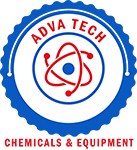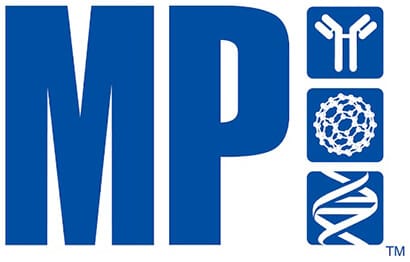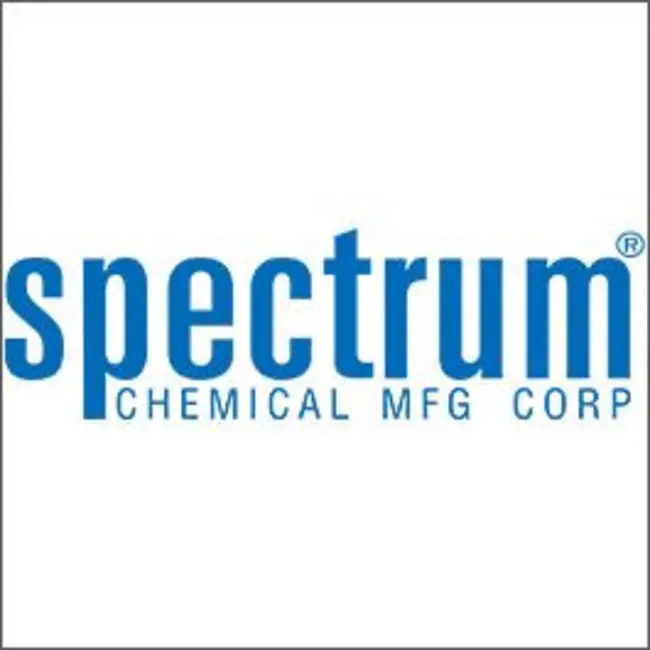GenScript Biotech
Showing 801–850 of 2554 results
-
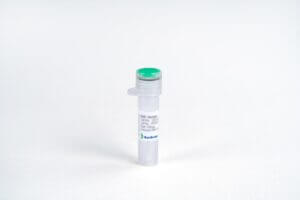
EPO, Human
$76.76 Add to cart View Product DetailsErythropoietin (EPO), a glycoprotein produced primarily by the kidney, is the principal factor that regulates erythropoiesis by stimulating the proliferation and differentiation of erythroid progenitor cells. The production of EPO by kidney cells is increased in response to hypoxia or anemia. Recombinant EPO has been approved for the treatment of anemia associated with chronic renal failure as well as for anemia of AZT treated AIDS patients.The cDNAs for EPO have been cloned from human, mouse, canine, etc. The mature proteins from the various species are highly conserved, exhibiting greater than 80% sequence identity at the amino acid level. Human EPO cDNA encodes a 193 amino acid residue precursor protein that is processed to yield a 165 amino acid residue mature protein. EPO contains one O-linked and three N-linked glycosylation sites. Glycosylation of EPO is required for EPO biological activities in vivo. EPO exhibits structural as well as amino sequence identity to the amino terminal 153 amino acid region of thrombopoietin.
-
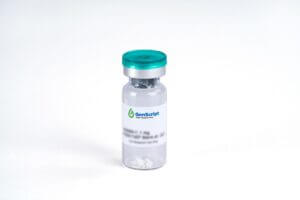
EREG, Human
$2,190.75 Add to cart View Product DetailsEpiregulin is a member of the EGF family of growth factors which includes, among others, epidermal growth factor (EGF), transforming growth factor (TGF)-alpha, amphiregulin (ARG), HB (heparin-binding)-EGF, betacellulin, and the various heregulins. It is expressed mainly in the placenta and peripheral blood leukocytes and in certain carcinomas of the bladder, lung, kidney and colon. Epiregulin stimulates the proliferation of keratinocytes, hepatocytes, fibroblasts and vascular smooth muscle cells. It also inhibits the growth of several tumor-derived epithelial cell lines. Human Epiregulin is initially synthesized as a glycosylated 19.0 kDa transmembrane precursor protein, which is processed by proteolytic cleavage to produce a 6.0 kDa mature secreted sequence.
-

EREG, Human
$163.88 Add to cart View Product DetailsEpiregulin is a member of the EGF family of growth factors which includes, among others, epidermal growth factor (EGF), transforming growth factor (TGF)-alpha, amphiregulin (ARG), HB (heparin-binding)-EGF, betacellulin, and the various heregulins. It is expressed mainly in the placenta and peripheral blood leukocytes and in certain carcinomas of the bladder, lung, kidney and colon. Epiregulin stimulates the proliferation of keratinocytes, hepatocytes, fibroblasts and vascular smooth muscle cells. It also inhibits the growth of several tumor-derived epithelial cell lines. Human Epiregulin is initially synthesized as a glycosylated 19.0 kDa transmembrane precursor protein, which is processed by proteolytic cleavage to produce a 6.0 kDa mature secreted sequence.
-
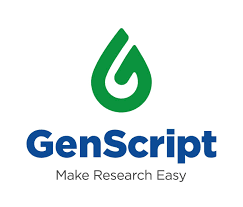
eStain Filter Paper
$55.20 Add to cart View Product DetailseStain Filter Paper for eStain L1, eStain L1C, and eStain LG.
-
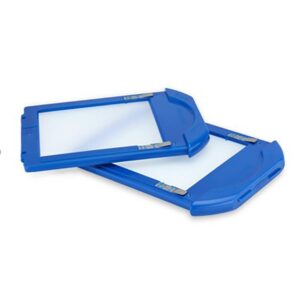
eStain Gel Holder
$327.75 Add to cart View Product DetailseStain Gel Holder for eStain L1, eStain L1c, and eStain LG.
-
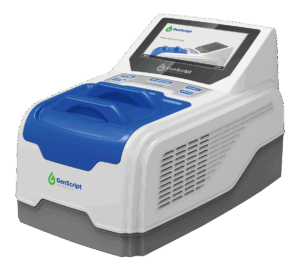
eStain L1 Protein Staining Device
$4,867.95 Add to cart View Product DetailseStain L1 is a highly efficient protein PAGE gel staining system, which uses Coomassie Brilliant Blue and a patented protein staining technology developed by Genscript. eStain L1 staining system integrates the traditional three steps of fixing- staining-destaining into one step and can stain/destain two protein PAGE gels simultaneously in 10 minutes or less.
eStain L1 protein PAGE gel staining system consists of two parts, one is the eStain L1 protein staining instrument, and the other is the eStain L1 protein staining kit which includes the consumables required for the staining/destaining. After electrophoresis, transfer the PAGE gel onto the gel holder following the instruction and insert the gel holder into the staining chamber. Simply press the start button to start the staining process. The instrument automatically pumps in/out the staining/destaining buffers and no additional reagents or operations are needed. eStain L1 works with all types of precast as well as homemade mini PAGE gels. Compared with the conventional staining methods, gels stained by eStain L1 have crisp blue bands with minimum or no background. eStain L1 also offers superior sensitivity compared to conventional methods and can detect as low as 12.5 ng of protein. -

eStain L1C Protein Staining Kit
$99.19 Add to cart View Product DetailseStain L1C Staining Kit (Cat No: L00753) contains reagents that are used with eStain L1 protein staining device (L00657) for demo. Each kit contains 1 x 2L of concentrated staining solution, 2 x 1L of concentrated destaining solution, and a pack of filter paper (50pK).
-
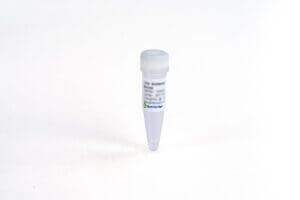
Estradiol (E2) antibody (2H3HC) , Human Chimeric
$255.30 Add to cart View Product DetailsEstradiol (E2) is a female sex hormone. It regulates the estrous and menstrual female reproductive cycles. It is is important in the development and maintenance of female reproductive tissues.
-

Estradiol (E2) antibody (2H3HC) , Human Chimeric
$2,553.00 Add to cart View Product DetailsEstradiol (E2) is a female sex hormone. It regulates the estrous and menstrual female reproductive cycles. It is is important in the development and maintenance of female reproductive tissues.
-
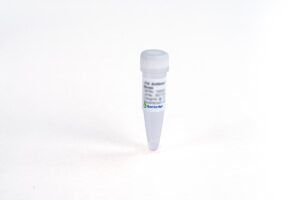
Estradiol (E2) antibody (2H3HC) , Human Chimeric
$21,722.06 Add to cart View Product DetailsEstradiol (E2) is a female sex hormone. It regulates the estrous and menstrual female reproductive cycles. It is is important in the development and maintenance of female reproductive tissues.
-

Exendin-4
$414.00 Add to cart View Product DetailsExendin-4 is a novel 39-amino acid peptide isolated from the venom of the Gila monster Heloderma suspectum. It shares 53% sequence homology with GLP-17-36amide and interacts with the same membrane receptor. Exendin-4 enhances glucose-dependent insulin secretion, suppresses inappropriately elevated glucagon secretion, and slows gastric emptying in vivo. It also promotes ß-cell proliferation and neogenesis in vitro and in animal models.
-

Exendin-4
$155.25 Add to cart View Product DetailsExendin-4 is a novel 39-amino acid peptide isolated from the venom of the Gila monster Heloderma suspectum. It shares 53% sequence homology with GLP-17-36amide and interacts with the same membrane receptor. Exendin-4 enhances glucose-dependent insulin secretion, suppresses inappropriately elevated glucagon secretion, and slows gastric emptying in vivo. It also promotes ß-cell proliferation and neogenesis in vitro and in animal models.
-

Exodus-2/CCL21, Human
$2,018.25 Add to cart View Product DetailsExodus-2/CCL21 is a novel CC chemokine discovered independently by three groups from the EST database, and shows 21-33% identity to other CC chemokines. Exodus-2 contains the four conserved cysteines characteristic of β chemokines plus two additional cysteines in its unusually long carboxyl terminal domain. It is expressed in lymph nodes of certain endothelial cells, and in the spleen and appendix. Exodus-2 chemoattracts T and B lymphocytes and inhibits hematopoiesis.
-

Exodus-2/CCL21, Human
$155.25 Add to cart View Product DetailsExodus-2/CCL21 is a novel CC chemokine discovered independently by three groups from the EST database, and shows 21-33% identity to other CC chemokines. Exodus-2 contains the four conserved cysteines characteristic of β chemokines plus two additional cysteines in its unusually long carboxyl terminal domain. It is expressed in lymph nodes of certain endothelial cells, and in the spleen and appendix. Exodus-2 chemoattracts T and B lymphocytes and inhibits hematopoiesis.
-

ExpressPlus™ PAGE Gel, 10×8, 4-12%, 10 wells
$138.00 Add to cart View Product DetailsGenScript ExpressPlus™ PAGE Gels are high-performance precast mini polyacrylamide gels specially designed for large loading volumes. The unique design of the cassette gives better band resolution and significantly improves the sample distribution in the loading wells which increases the evenness of the band. ExpressPlus™ PAGE Gels are casted in a weak acidic pH buffer that minimizes the hydrolysis of polyacrylamide and results in extra gel stability.
Manufactured without SDS, ExpressPlus™ PAGE Gels are ideal for SDS-PAGE electrophoresis depending on the running buffer and transfer buffer used. The proprietary gel-casting techniques provide excellent batch-to-batch consistency and guarantee a reliable migration pattern. Using specially formulated Tris-MOPS running buffer, ExpressPlus™ PAGE Gels enable proteins to be separated quickly and easily for subsequent detection by staining or western blotting.
-

ExpressPlus™ PAGE Gel, 10×8, 4-12%, 12 wells
$138.00 Add to cart View Product DetailsGenScript ExpressPlus™ PAGE Gels are high-performance precast mini polyacrylamide gels specially designed for large loading volumes. The unique design of the cassette gives better band resolution and significantly improves the sample distribution in the loading wells which increases the evenness of the band. ExpressPlus™ PAGE Gels are casted in a weak acidic pH buffer that minimizes the hydrolysis of polyacrylamide and results in extra gel stability.
Manufactured without SDS, ExpressPlus™ PAGE Gels are ideal for SDS-PAGE electrophoresis depending on the running buffer and transfer buffer used. The proprietary gel-casting techniques provide excellent batch-to-batch consistency and guarantee a reliable migration pattern. Using specially formulated Tris-MOPS running buffer, ExpressPlus™ PAGE Gels enable proteins to be separated quickly and easily for subsequent detection by staining or western blotting.
-

ExpressPlus™ PAGE Gel, 10×8, 4-12%, 15 wells
$138.00 Add to cart View Product DetailsGenScript ExpressPlus™ PAGE Gels are high-performance precast mini polyacrylamide gels specially designed for large loading volumes. The unique design of the cassette gives better band resolution and significantly improves the sample distribution in the loading wells which increases the evenness of the band. ExpressPlus™ PAGE Gels are casted in a weak acidic pH buffer that minimizes the hydrolysis of polyacrylamide and results in extra gel stability.
Manufactured without SDS, ExpressPlus™ PAGE Gels are ideal for SDS-PAGE electrophoresis depending on the running buffer and transfer buffer used. The proprietary gel-casting techniques provide excellent batch-to-batch consistency and guarantee a reliable migration pattern. Using specially formulated Tris-MOPS running buffer, ExpressPlus™ PAGE Gels enable proteins to be separated quickly and easily for subsequent detection by staining or western blotting.
-

ExpressPlus™ PAGE Gel, 10×8, 4-20%, 10 wells
$138.00 Add to cart View Product DetailsGenScript ExpressPlus™ PAGE Gels are high-performance precast mini polyacrylamide gels specially designed for large loading volumes. The unique design of the cassette gives better band resolution and significantly improves the sample distribution in the loading wells which increases the evenness of the band. ExpressPlus™ PAGE Gels are casted in a weak acidic pH buffer that minimizes the hydrolysis of polyacrylamide and results in extra gel stability.
Manufactured without SDS, ExpressPlus™ PAGE Gels are ideal for SDS-PAGE electrophoresis depending on the running buffer and transfer buffer used. The proprietary gel-casting techniques provide excellent batch-to-batch consistency and guarantee a reliable migration pattern. Using specially formulated Tris-MOPS running buffer, ExpressPlus™ PAGE Gels enable proteins to be separated quickly and easily for subsequent detection by staining or western blotting.
-

ExpressPlus™ PAGE Gel, 10×8, 4-20%, 12 wells
$138.00 Add to cart View Product DetailsGenScript ExpressPlus™ PAGE Gels are high-performance precast mini polyacrylamide gels specially designed for large loading volumes. The unique design of the cassette gives better band resolution and significantly improves the sample distribution in the loading wells which increases the evenness of the band. ExpressPlus™ PAGE Gels are casted in a weak acidic pH buffer that minimizes the hydrolysis of polyacrylamide and results in extra gel stability.
Manufactured without SDS, ExpressPlus™ PAGE Gels are ideal for SDS-PAGE electrophoresis depending on the running buffer and transfer buffer used. The proprietary gel-casting techniques provide excellent batch-to-batch consistency and guarantee a reliable migration pattern. Using specially formulated Tris-MOPS running buffer, ExpressPlus™ PAGE Gels enable proteins to be separated quickly and easily for subsequent detection by staining or western blotting.
-

ExpressPlus™ PAGE Gel, 10×8, 4-20%, 15 wells
$138.00 Add to cart View Product DetailsGenScript ExpressPlus™ PAGE Gels are high-performance precast mini polyacrylamide gels specially designed for large loading volumes. The unique design of the cassette gives better band resolution and significantly improves the sample distribution in the loading wells which increases the evenness of the band. ExpressPlus™ PAGE Gels are casted in a weak acidic pH buffer that minimizes the hydrolysis of polyacrylamide and results in extra gel stability.
Manufactured without SDS, ExpressPlus™ PAGE Gels are ideal for SDS-PAGE electrophoresis depending on the running buffer and transfer buffer used. The proprietary gel-casting techniques provide excellent batch-to-batch consistency and guarantee a reliable migration pattern. Using specially formulated Tris-MOPS running buffer, ExpressPlus™ PAGE Gels enable proteins to be separated quickly and easily for subsequent detection by staining or western blotting.
-

eZwest Cleaning Cassette
$230.29 Add to cart View Product DetailseZwest Cleaning Cassette for eZwest Lite (L00816)
-

eZwest diluent kit
$138.00 Add to cart View Product DetailsGenScript’s eZwest™ Diluent Kit is designed to be used in combination with the eZwest™ Lite Automated Western Device.
The eZwest™ Diluent Kit speeds up the overall western blotting
process by shortening the incubation time for primary and secondary antibodies.
Moreover, it can be used as a blocking reagent during the incubation, thus
eliminating the need for a separate blocking step. The results obtained using
the eZwest™ Diluent Kit are as sensitive as those obtained through
a conventional western blotting protocol.
The Diluent Kit
should be stored at 2-8℃. -
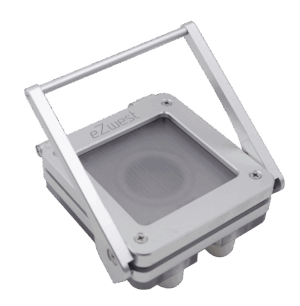
eZwest Membrane Cassette
$362.25 Add to cart View Product DetailseZwest Membrane Cassette for eZwest Lite (L00816)
-
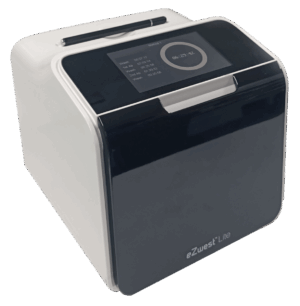
eZwest™ Lite Automated Western Device
$3,421.25 Add to cart View Product DetailseZwest™ Lite is an automated western blotting device providing an easy and simple solution in your western blotting workflow. After proteins are transferred onto the membrane, load the membrane into our eZwest™ Lite device for automated blocking, incubation, and washing cycles. The user only needs to prepare the required reagents, run the customized program, and eZwest™ Lite will take care of the rest. Once the program is finished, the user can collect the results and immediately proceed to detection and analysis steps. eZwest™ Lite is easy to use and has minimal footprint.
-

FDP Antibody (6B6), mAb, Mouse
$127.65 Add to cart View Product DetailsFibrin
degradation product (FDP) is composed of variety of components of the blood
produced by clot degeneration. FDP and D-dimer are involved in many vascular
diseases. They are also considered as a marker for thrombotic and thrombolytic
events in pulmonary embolism. -

FDP Antibody (6B6), mAb, Mouse
$1,276.50 Add to cart View Product DetailsFibrin
degradation product (FDP) is composed of variety of components of the blood
produced by clot degeneration. FDP and D-dimer are involved in many vascular
diseases. They are also considered as a marker for thrombotic and thrombolytic
events in pulmonary embolism. -
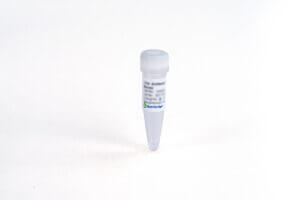
FDP Antibody (6B6), mAb, Mouse
$12,765.00 Add to cart View Product DetailsFibrin
degradation product (FDP) is composed of variety of components of the blood
produced by clot degeneration. FDP and D-dimer are involved in many vascular
diseases. They are also considered as a marker for thrombotic and thrombolytic
events in pulmonary embolism. -

Ferritin (1C2), mAb, Mouse
$102.64 Add to cart View Product DetailsFerritinis a universal intracellular protein that stores iron and releases.Itisaglobular proteincomprising 24 subunits.Low levels of ferritin lead to iron-deficiency anemia.As a result,serumferritin is used fordiagnosis ofiron-deficiency anemia.
-

Ferritin (1C2), mAb, Mouse
$1,026.38 Add to cart View Product DetailsFerritinis a universal intracellular protein that stores iron and releases.Itisaglobular proteincomprising 24 subunits.Low levels of ferritin lead to iron-deficiency anemia.As a result,serumferritin is used fordiagnosis ofiron-deficiency anemia.
-
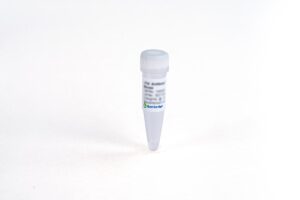
Ferritin (1C2), mAb, Mouse
$8,688.83 Add to cart View Product DetailsFerritinis a universal intracellular protein that stores iron and releases.Itisaglobular proteincomprising 24 subunits.Low levels of ferritin lead to iron-deficiency anemia.As a result,serumferritin is used fordiagnosis ofiron-deficiency anemia.
-

Ferritin (1H3), mAb, Mouse
$102.64 Add to cart View Product DetailsFerritinis a universal intracellular protein that stores iron and releases.Itisaglobular proteincomprising 24 subunits.Low levels of ferritin lead to iron-deficiency anemia.As a result,serumferritin is used fordiagnosis ofiron-deficiency anemia.
-

Ferritin (1H3), mAb, Mouse
$1,026.38 Add to cart View Product DetailsFerritinis a universal intracellular protein that stores iron and releases.Itisaglobular proteincomprising 24 subunits.Low levels of ferritin lead to iron-deficiency anemia.As a result,serumferritin is used fordiagnosis ofiron-deficiency anemia.
-
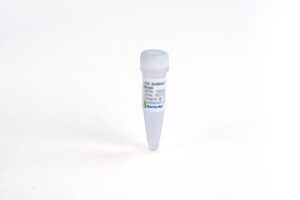
Ferritin (1H3), mAb, Mouse
$8,688.83 Add to cart View Product DetailsFerritinis a universal intracellular protein that stores iron and releases.Itisaglobular proteincomprising 24 subunits.Low levels of ferritin lead to iron-deficiency anemia.As a result,serumferritin is used fordiagnosis ofiron-deficiency anemia.
-

FGF-10, Human
$1,323.94 Add to cart View Product DetailsFibroblast Growth Factor-10 (FGF-10) is a mitogen mainly produced by mesenchymal stem cells in the lung. FGF-10 belongs to the heparin binding FGF family, and is also known as Keratinocyte Growth Factor-2 (KGF-2). It shares homology with KGF and receptor binding to FGFR2-IIIb. However, while KGF induces proliferation and differentiation of various epithelial cells, FGF-10 promotes budding and branching morphogenesis during the multi-organ development via mesenchymal-epithelial cell interactions. FGF-10 is critical for lung and limb development, and is regulated by Shh during early development.
-

FGF-10, Human
$63.83 Add to cart View Product DetailsFibroblast Growth Factor-10 (FGF-10) is a mitogen mainly produced by mesenchymal stem cells in the lung. FGF-10 belongs to the heparin binding FGF family, and is also known as Keratinocyte Growth Factor-2 (KGF-2). It shares homology with KGF and receptor binding to FGFR2-IIIb. However, while KGF induces proliferation and differentiation of various epithelial cells, FGF-10 promotes budding and branching morphogenesis during the multi-organ development via mesenchymal-epithelial cell interactions. FGF-10 is critical for lung and limb development, and is regulated by Shh during early development.
-

FGF-10, Human
$155.25 Add to cart View Product DetailsFibroblast Growth Factor-10 (FGF-10) is a mitogen mainly produced by mesenchymal stem cells in the lung. FGF-10 belongs to the heparin binding FGF family, and is also known as Keratinocyte Growth Factor-2 (KGF-2). It shares homology with KGF and receptor binding to FGFR2-IIIb. However, while KGF induces proliferation and differentiation of various epithelial cells, FGF-10 promotes budding and branching morphogenesis during the multi-organ development via mesenchymal-epithelial cell interactions. FGF-10 is critical for lung and limb development, and is regulated by Shh during early development.
-

FGF-10, Mouse
$1,470.56 Add to cart View Product DetailsFibroblast Growth Factor-10 (FGF-10) is a mitogen mainly produced by mesenchymal stem cells in lung. FGF-10 belongs to the heparin binding FGF family, and is also known as Keratinocyte Growth Factor-2 (KGF-2). It shares homology with KGF, and both KGF and FGF-10 activate the receptor FGFR2-IIIb. However, unlike KGF, which induces the proliferation and differentiation of various epithelial cells, FGF-10 is an essential factor for the budding and branching morphogenesis during multi-organ development via mesenchymal-epithelial interactions. FGF-10 is crucial for lung and limb development and is regulated by Shh during early development.
-

FGF-10, Mouse
$68.14 Add to cart View Product DetailsFibroblast Growth Factor-10 (FGF-10) is a mitogen mainly produced by mesenchymal stem cells in lung. FGF-10 belongs to the heparin binding FGF family, and is also known as Keratinocyte Growth Factor-2 (KGF-2). It shares homology with KGF, and both KGF and FGF-10 activate the receptor FGFR2-IIIb. However, unlike KGF, which induces the proliferation and differentiation of various epithelial cells, FGF-10 is an essential factor for the budding and branching morphogenesis during multi-organ development via mesenchymal-epithelial interactions. FGF-10 is crucial for lung and limb development and is regulated by Shh during early development.
-

FGF-10, Mouse
$155.25 Add to cart View Product DetailsFibroblast Growth Factor-10 (FGF-10) is a mitogen mainly produced by mesenchymal stem cells in lung. FGF-10 belongs to the heparin binding FGF family, and is also known as Keratinocyte Growth Factor-2 (KGF-2). It shares homology with KGF, and both KGF and FGF-10 activate the receptor FGFR2-IIIb. However, unlike KGF, which induces the proliferation and differentiation of various epithelial cells, FGF-10 is an essential factor for the budding and branching morphogenesis during multi-organ development via mesenchymal-epithelial interactions. FGF-10 is crucial for lung and limb development and is regulated by Shh during early development.
-

FGF-12, Human
$2,238.19 Add to cart View Product DetailsFibroblast Growth Factor 12 (FGF-12) is a member of the fibroblast growth factor (FGF) family. FGF-12 is probably involved in nervous system development and function. FGF-12 lacks the N-terminal signal sequence present in most of the FGF family members, but it contains clusters of basic residues that have been demonstrated to act as a nuclear localization signal. When transfected into mammalian cells, this protein accumulated in the nucleus, but was not secreted. The specific function of this gene has not yet been determined. Two alternatively spliced transcript variants encoding distinct isoforms have been reported.
-

FGF-12, Human
$452.81 Add to cart View Product DetailsFibroblast Growth Factor 12 (FGF-12) is a member of the fibroblast growth factor (FGF) family. FGF-12 is probably involved in nervous system development and function. FGF-12 lacks the N-terminal signal sequence present in most of the FGF family members, but it contains clusters of basic residues that have been demonstrated to act as a nuclear localization signal. When transfected into mammalian cells, this protein accumulated in the nucleus, but was not secreted. The specific function of this gene has not yet been determined. Two alternatively spliced transcript variants encoding distinct isoforms have been reported.
-

FGF-16, Human
$1,323.94 Add to cart View Product DetailsFibroblast Growth Factor-16 (FGF-16) is a heparin binding growth factor, a member of the FGF family. All FGF family members are heparinbinding growth factors with a core 120 amino acid (aa) FGF domain that allows for a common tertiary structure. FGF family members possess broad mitogenic and cell survival activities, and are involved in a variety of biological processes, including embryonic development, cell growth, morphogenesis, tissue repair, tumor growth and invasion. The rat homolog is predominantly expressed in embryonic brown adipose tissue and has significant mitogenic activity, which suggests a role in proliferation of embryonic brown adipose tissue. FGF-16 is most similar to FGF-9 (73 % amino acid identity). The protein sequence of human FGF-16 displays 98.6% identity with rat FGF-16. Chimpanzee FGF-16 (207 amino acids), chicken FGF-16 (207 amino acids), and zebrafish FGF-16 (203 amino acids) show 100 %, 89.9 %, and 79.2 % total amino acid identity with human FGF-16.
-

FGF-16, Human
$63.83 Add to cart View Product DetailsFibroblast Growth Factor-16 (FGF-16) is a heparin binding growth factor, a member of the FGF family. All FGF family members are heparinbinding growth factors with a core 120 amino acid (aa) FGF domain that allows for a common tertiary structure. FGF family members possess broad mitogenic and cell survival activities, and are involved in a variety of biological processes, including embryonic development, cell growth, morphogenesis, tissue repair, tumor growth and invasion. The rat homolog is predominantly expressed in embryonic brown adipose tissue and has significant mitogenic activity, which suggests a role in proliferation of embryonic brown adipose tissue. FGF-16 is most similar to FGF-9 (73 % amino acid identity). The protein sequence of human FGF-16 displays 98.6% identity with rat FGF-16. Chimpanzee FGF-16 (207 amino acids), chicken FGF-16 (207 amino acids), and zebrafish FGF-16 (203 amino acids) show 100 %, 89.9 %, and 79.2 % total amino acid identity with human FGF-16.
-

FGF-16, Human
$155.25 Add to cart View Product DetailsFibroblast Growth Factor-16 (FGF-16) is a heparin binding growth factor, a member of the FGF family. All FGF family members are heparinbinding growth factors with a core 120 amino acid (aa) FGF domain that allows for a common tertiary structure. FGF family members possess broad mitogenic and cell survival activities, and are involved in a variety of biological processes, including embryonic development, cell growth, morphogenesis, tissue repair, tumor growth and invasion. The rat homolog is predominantly expressed in embryonic brown adipose tissue and has significant mitogenic activity, which suggests a role in proliferation of embryonic brown adipose tissue. FGF-16 is most similar to FGF-9 (73 % amino acid identity). The protein sequence of human FGF-16 displays 98.6% identity with rat FGF-16. Chimpanzee FGF-16 (207 amino acids), chicken FGF-16 (207 amino acids), and zebrafish FGF-16 (203 amino acids) show 100 %, 89.9 %, and 79.2 % total amino acid identity with human FGF-16.
-
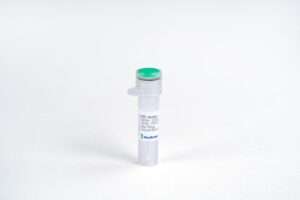
FGF-18, Human
$1,470.56 Add to cart View Product DetailsFibroblast Growth Factor-18 (FGF-18) is a heparin-binding growth factor that is a member of the FGF family. FGF-18 signals through FGFR 1c, 2c, 3c, and 4. FGF-18 plays an important role in the regulation of cell proliferation, cell differentiation and cell migration. FGF-18 is required for normal ossification and bone development. It can also stimulate hepatic and intestinal proliferation.
-

FGF-18, Human
$68.14 Add to cart View Product DetailsFibroblast Growth Factor-18 (FGF-18) is a heparin-binding growth factor that is a member of the FGF family. FGF-18 signals through FGFR 1c, 2c, 3c, and 4. FGF-18 plays an important role in the regulation of cell proliferation, cell differentiation and cell migration. FGF-18 is required for normal ossification and bone development. It can also stimulate hepatic and intestinal proliferation.
-

FGF-18, Human
$155.25 Add to cart View Product DetailsFibroblast Growth Factor-18 (FGF-18) is a heparin-binding growth factor that is a member of the FGF family. FGF-18 signals through FGFR 1c, 2c, 3c, and 4. FGF-18 plays an important role in the regulation of cell proliferation, cell differentiation and cell migration. FGF-18 is required for normal ossification and bone development. It can also stimulate hepatic and intestinal proliferation.
-

FGF-18, Mouse
$2,238.19 Add to cart View Product DetailsMurine FGF-18 is encoded by the FGF18 gene. By phylogenetic analysis and gene location analysis, FGF-18 is divided into FGF-8 subfamily which has three members FGF-8, FGF-17 and FGF-18. Using FGF knockout mice model, the numbers of this subfamily were testified that have crucial roles in embryo development. FGF-18–/– mice have decreased expression of osteogenic markers and delayed long-bone ossification. FGF-18 has been shown in vitro that this protein is able to induce neurite outgrowth in PC12 cells. In addition, it also has significant roles in lung development and has an anabolic effect on cartilage formation.
-

FGF-18, Mouse
$452.81 Add to cart View Product DetailsMurine FGF-18 is encoded by the FGF18 gene. By phylogenetic analysis and gene location analysis, FGF-18 is divided into FGF-8 subfamily which has three members FGF-8, FGF-17 and FGF-18. Using FGF knockout mice model, the numbers of this subfamily were testified that have crucial roles in embryo development. FGF-18–/– mice have decreased expression of osteogenic markers and delayed long-bone ossification. FGF-18 has been shown in vitro that this protein is able to induce neurite outgrowth in PC12 cells. In addition, it also has significant roles in lung development and has an anabolic effect on cartilage formation.
-

FGF-18, Rat
$1,470.56 Add to cart View Product DetailsFibroblast Growth Factor 18 (FGF-18) is a pleiotropic cytokine belonging to the heparin-binding FGF family, which has 23 different members. Structurally, FGF-18 is closely related to FGF-8 and FGF-17. Like other FGFs, FGF-18 can bind to different FGF receptors in vivo. FGF-18 is expressed in various tissues and has multiple functions: during long bone growth, FGF-18 is expressed in perichondrium and developing joints, and regulates bone formation by inhibiting chondrocyte proliferation and differentiation; FGF-18 knock-out mice survive embryonic development, but exhibit skeletal abnormalities and die in the early neonatal period. FGF-18 also induces ectopic cartilage formation in the lung, and alters the morphology of the pulmonary mesenchyma.
